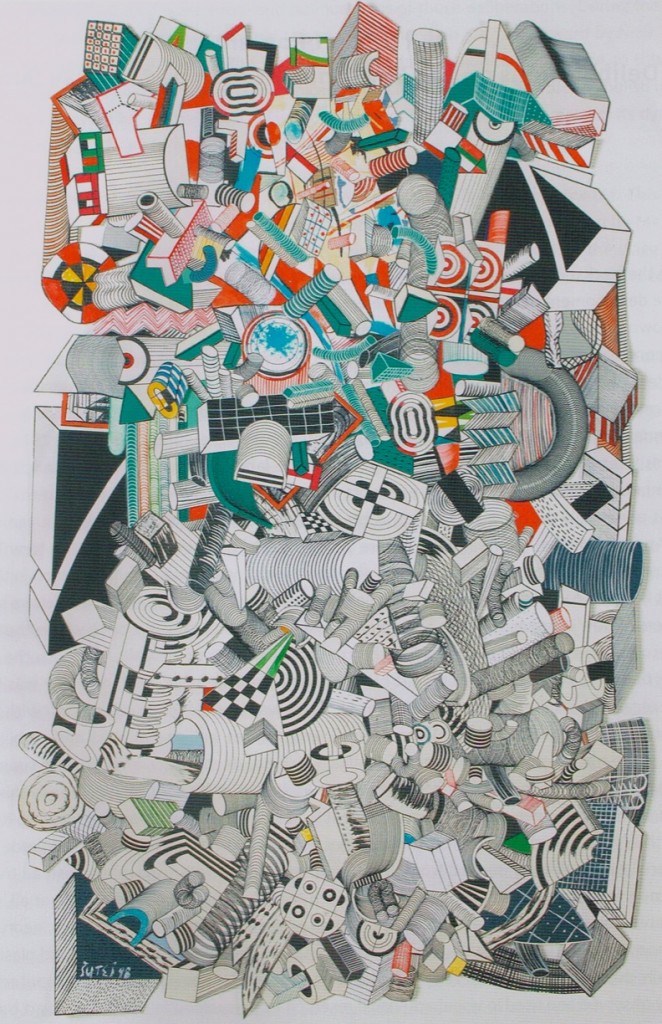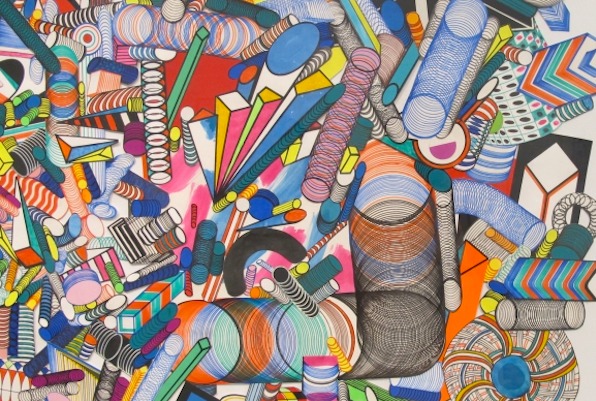Art
Order and disorder: the work of Miroslav Šutej
Of Croatia’s seminal twentieth-century artists, Miroslav Šutej (1936-2005) stands out as one of the best known and most loved for his vibrant, playful, abstract work. Whether you find the invigorating colors, complex layers, and almost obsessively repetitious forms freeing or restrictive, attractive or repellent, chaotic or harmonious, Šutej’s work possesses an undeniable energy and accessibility that triggers the imagination.
Though he began his career making figurative drawings and paintings of farm life in his hometown of Duga Resa, Šutej is known as one of the foremost practitioners of geometrical abstraction and optical art in Croatia. Associated with the New Tendencies movement, which encouraged the idea of art as visual research, Šutej’s early work plays with visual perception and optical illusion. New Tendencies, having surfaced in Zagreb in 1961, can be seen as a precursor to the op-art craze that would sweep the globe and become the focus of the 1965 Responsive Eye exhibition at the Museum of Modern Art in New York – in which Šutej was a participant.
Featuring geometric forms that appear to undulate and project from the two-dimensional surface, Šutej’s op-art experiments reveal an interest in playing with dimensional boundaries. By the end of the decade, he was experimenting with what he called “mobile drawings” – complex, two-dimensional works that appear almost sculptural. By fitting geometric cut outs with metal brackets, Šutej created jointed paper constructions with the ability to move. Even while static, his mobile drawings are eye-catching, but the total effect is realized only once they are seen in movement. Using stop motion animation, Šutej brought his mobile drawings to life, capturing their carefully choreographed performances on film.

Colored Circle 1973
In 1969, three of Šutej’s color serigraphs, Composition II (1966), SM1 (1968), and SM4 (1969), were included in the MoMA exhibition Yugoslavia: A Report, which brought together twenty-four artists whose work was recognized for its technical sophistication and diversity of subject matter. For an exhibition label, curator Riva Castelman wrote: “Zagreb, [the] cultural center of Yugoslavia and capital of Croatia, is the crossroad of international art trends. There Action Painting, Op Art, and Hard Edge styles find current acceptance. Near Zagreb, Miroslav Šutej works on colorful movable sculpture and prints. His serigraphs are innovative and contribute a new dimension to printmaking.”
During the late 1970s and 1980s, Šutej took an interest in folk art and traditional crafts, using a subdued palette of earthy neutrals to create intricately woven paper collages resembling woven textiles. By the 1990s, he once again began using exceedingly bright colors to create simultaneously busy and methodical compositions made up almost entirely of endlessly repeating circular forms. These complex compositions can be seen as symbolic of Šutej’s artistic practice as a whole, which he understood as cyclical, progressive, and paradoxical: “If we pose the question of order and disorder in my art, it is constantly spinning in a circle and repeating. Each mobile drawing can be brought to perfection, or to a state of total chaos. … Now, when I reflect upon the traveled path, I observe that all of my work is based on practice in the pursuit of perfection and enriching imagination… .”

From the cycle Chaos “Picto-drawing n.n.” 1998 (MSU)
A retrospective of Miroslav Sutej’s work is currently on show at the MSU (Museum of Contemporary Art) in Zagreb, Croatia.
Written by: Elaine Ritchel (@elaineritchel)







